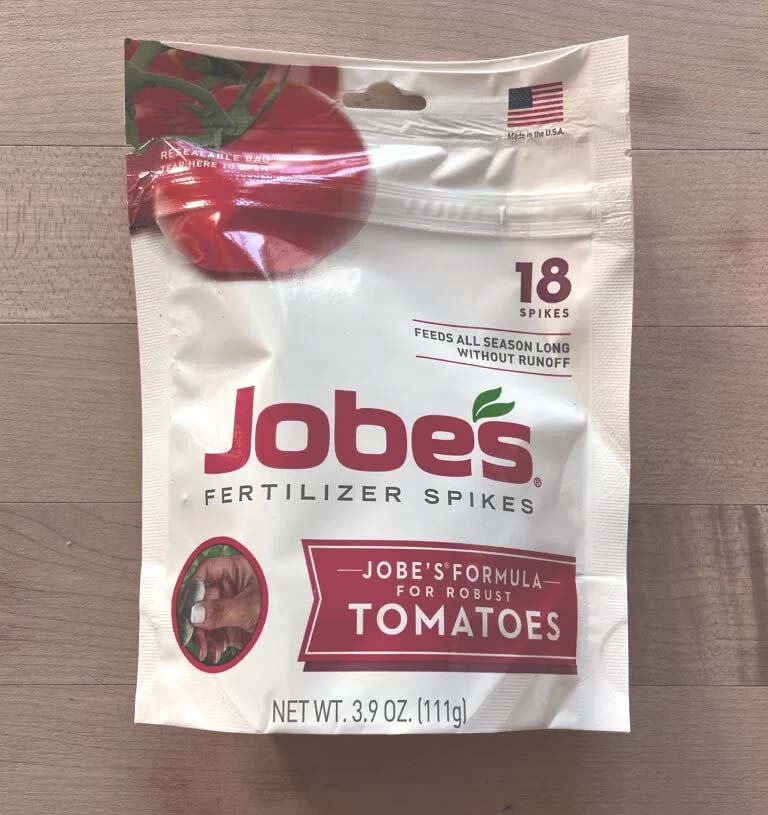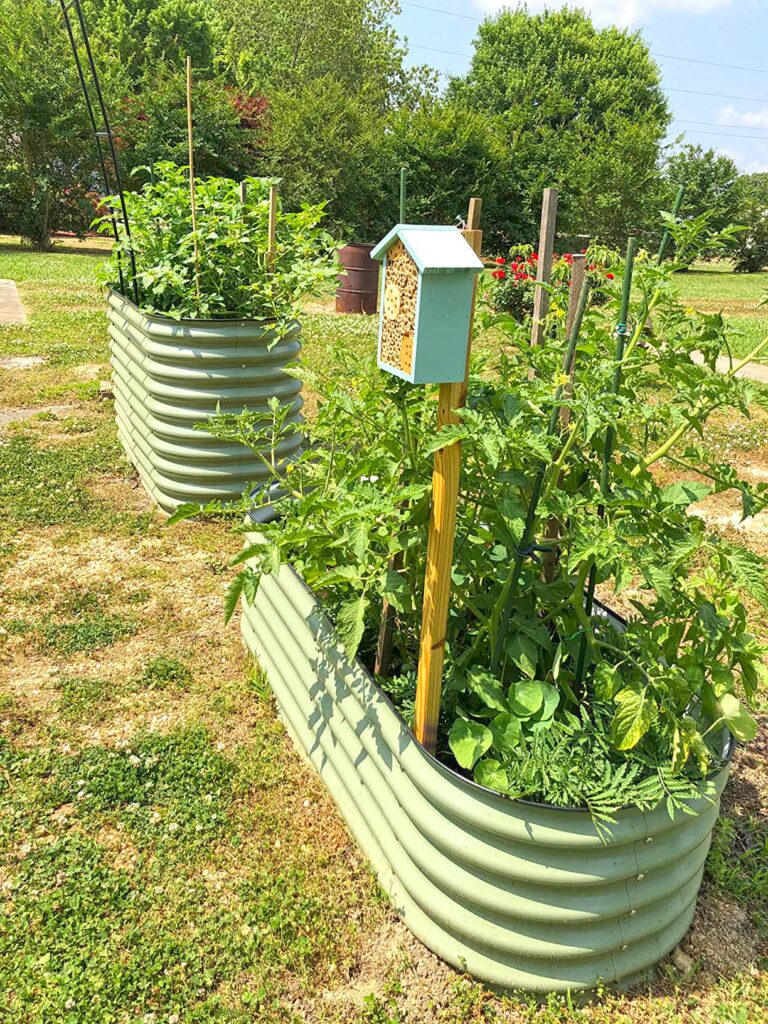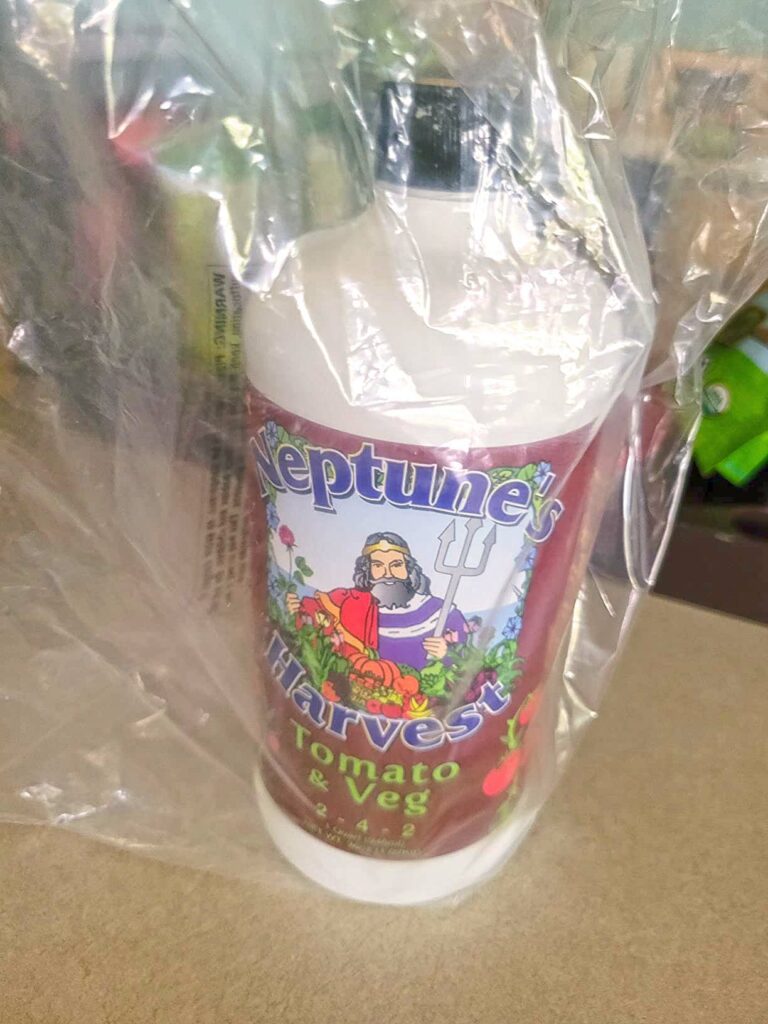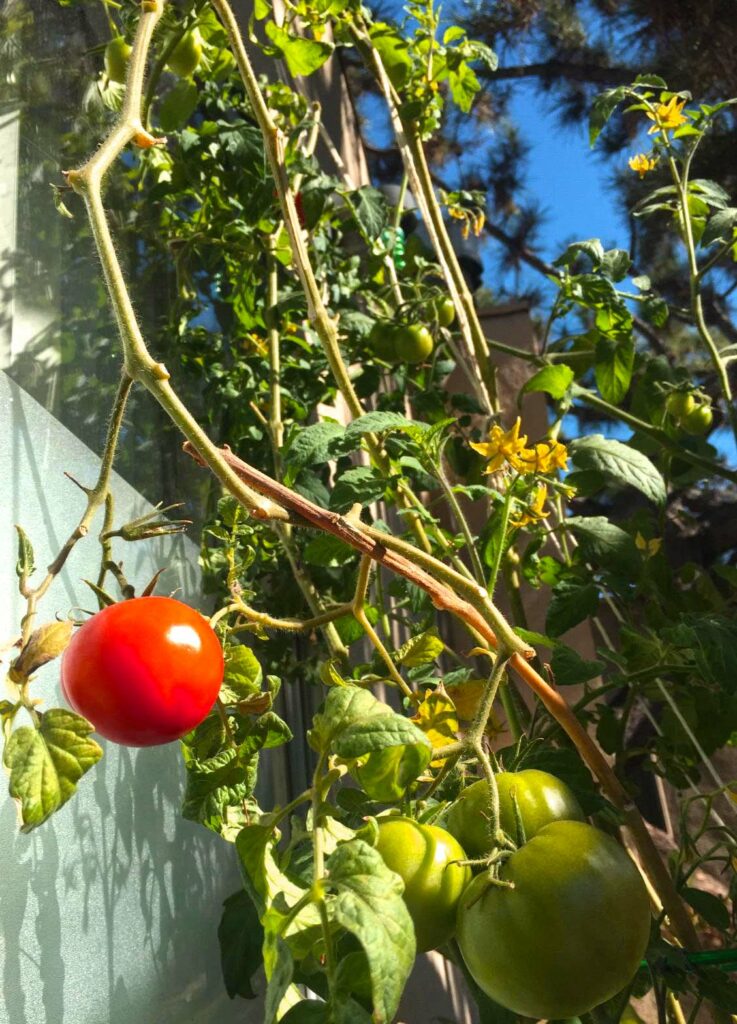Tomato gardeners are one of the most passionate hobbyists that we have come across. They love seeing their work pay off when they get a yield of fresh, plump, and bright red tomatoes.
All farmers and gardeners know well that getting a yield of juicy and beautiful tomatoes is not an overnight task. It requires diligence, hard work, and attention to detail.
Fertilizers play a key role in producing quality tomatoes as they provide the nutrients that are needed for them to grow. If you are a tomato gardener or you are looking forward to growing them, you need to know when and how to use fertilizers for achieving the best harvest.
If you don’t know where to start, you need not worry! You have arrived at the right place. We have compiled this comprehensive article in which you are going to learn about types of fertilizers, what you should consider while buying fertilizer, and the best fertilizer for tomatoes.
Types of Fertilizer for Tomatoes:
There are three types of fertilizers available in the market to fertilize tomatoes. They include granular fertilizers, water-soluble fertilizers, and liquid fertilizers. All three of these types have both organic as well as inorganic components. Users can choose the type of fertilizer based on the needs of their plant, soil component, and the stage of the growth cycle.
Granular Fertilizer:
Granular fertilizers come in the form of small granules that have indefinite storage time, are easy to use, and are very effective. They are added to the soil before plantation or sprinkled on the surface of the soil by farmers.
Granular fertilizer can either be a quick-release formula or slow-release formula. Slow-release fertilizer is added to the soil before plantation. It can last up to one season. These fertilizers release nutrients each time the plant is watered or when it rains. Microorganisms in the soil also act on the granules and help in releasing nutrients.
Quick-release fertilizer is sprinkled over the soil and the nutrients are released instantly when the plant is watered. It works as a quick booster for plants. They mostly contain inorganic components.
Water-soluble Fertilizer:
These fertilizers are available in the form of powder or micro-granules that can readily dissolve in water. They can be stored for long times too and are available in both organic and inorganic forms.
They can be used in a couple of ways. You can add the powder to the soil directly and water it with a can or hose or dissolve it in water and use it as a liquid fertilizer. After being dissolved, a water-soluble fertilizer becomes readily available to the plant. The nutrients are added instantly to the soil and effects can be seen within days.
Liquid Fertilizer:
Liquid fertilizers are available in concentrated forms that have to be diluted with water. Once they are mixed with water, they can be added to a watering can, a hose, or a spray bottle. In addition to being added to the soil, they can be applied directly to the foliage in a very diluted form as a foliar spray.
Liquid fertilizer for tomatoes has a long shelf life and is relatively inexpensive. You can get them as inorganic and organic fertilizers. They also help in maintaining the pH of the soil and have to be reapplied frequently.
Organic Tomato Fertilizer:
As the name suggests, these fertilizers are not chemically treated and contain organic components. The ingredients are sourced from nature and are safe to be used around pets or animals.
Organic tomato fertilizers should be bought after thorough research. Look for the labels on the pack for organic certification before being convinced.
The downside to using organic fertilizers is that they have a strong smell as they contain fish emulsions but are a great source of nitrogen. The nutrients are released slowly but efficiently. Moreover, soil fertility is also improved through moisture retention and drainage.
Best Fertilizer for Tomatoes
1. Jobe’s Tomato Fertilizer Spikes

Jobe’s fertilizer spikes are way ahead of the conventional methods of farming. They are available as specially formulated, pre-measured fertilizer spikes that deliver the nutrients right at the roots.
To use them, you simply have to insert the fertilizer spikes into the soil. The slow-release fertilizer feeds the plant for 8 weeks. These fertilizer spikes are also highly beneficial as they will not be washed away or drained when you water the soil.
Their N-P-K ratio is 6:18:6 and comes in an 18-count waterproof pouch or a blister pack. It is ideal to be used for tomato plants.
Features:
- Slow-release fertilizer
- Shaped as spikes
- N-P-K 6:18:6
Pros
- Mess-free
- Easy to use
- Gives continuous nutrition for 8 weeks
Cons
- Due to packaging, spikes can arrive broken
- Expensive
- Not recommended for smaller Azalea plants
Testers Verdict
Our testers loved the fertilizer. They say it gave them the quickest and most gorgeous blooms. They could see the results within a month of use and highly recommended it to replenish soil nutrients.
However, a few users were not happy with the price and quantity. They said that they could buy a large bag of granular fertilizer for a lesser price.
2. Dr. Earth Home Grown Fertilizer

Dr. Earth fertilizer is the only non-GMO project verified fertilizer in the USA. It is great to be used for fertilizing tomatoes, vegetables, and herbs, all year long. It can be used for almost all growing stages, at initial seed planting time, during transplanting, and can be sprinkled as a top dressing or compost tea.
This fertilizer contains TruBiotic microbes and mycorrhizae that break down the nutrients inside the soil over time. They also increase soil resistance against drought and increase the performance of the plant.
The fertilizer is safe to be used around pets and people as it is free of toxins or GMO-infested chicken manure. The natural handcrafted blend of nutrients increases the quality of soil as only healthy soil can grow healthy plants.
Expect to harvest the most nutritious and healthy plants with this formula, even if your plants are showing delay in producing fruit.
Features:
- Non-GMO project verified fertilizer
- 100% organic tomato fertilizer
- Handcrafted from feed-grade ingredients
- Contains TruBiotic beneficial soil microbes
- No synthetic materials or toxins
Pros
- All-natural
- Very effective in producing a harvest
- Increases soil health
- Increases drought resistance
- Suitable for container gardens, backyard soil, and vegetable gardens
Cons
- Not suitable for indoor tomato plants
- Contain a bad odor as they are fully organic
Testers Verdict
Our users loved the results, they said that they could see a clear difference with the appearance and yield of tomato plants. They were also happy to use the organic fertilizer as it was safe for plants and would not burn them.
Note: click here if you want to know the Best Fertilizer For Grass
3. Miracle-Gro Water Soluble Tomato Plant Food

The water soluble Miracle-gro fertilizer is specially manufactured to give your tomato plant a healthy boost.
The robust N-P-K ratio of 18:18:21 gives sufficient plant food to your tomato plants. In addition to having macronutrients, this fertilizer also contains micronutrients like magnesium, iron, copper and zinc.
You can add this to your water can and water your plant like you would. Add the fertilizer every 7-14 days in the growing season for big and juicy tomatoes. As it is a water soluble fertilizer, it acts almost instantly by being absorbed through the roots.
It is guaranteed to not burn your plant if you use it as directed. A 1.5 pounds feed can cover up to 600 square feet area of land.
Features
- Contains both macronutrients and micronutrients
- N-P-K ratio 18:18:21
- Contains magnesium, iron, copper and zinc
- water soluble
- Can be used every 7-14 days
Pros
- Easy to use
- Value for money
- Acts instantly
- Great quality
Cons
- Does not contain calcium
Testers verdict
Our testers approve that this is easy to use and very effective in producing great tasting tomatoes.
Their only concern was that the fertilizer did not contain any calcium that caused blossom end rot for a user. So you might have to pass this fertilizer if you suspect your soil to have calcium deficiency.
4. JR Peter’s 51324 Jack’s Classic Tomato Feed

This is another water soluble, fast acting and efficient fertilizer. It contains high concentration of macro nutrients to promote vigorous plant growth from roots to tips of leaves and fruit.
The Tomato FeED has an NPK ratio of 12:15:30. High levels of potassium promote strong stems, healthy foliage and beautiful tomatoes.
It is a complete plant food as it contains sufficient micro nutrients as well. Magnesium is added for improved feeding results under diverse soil conditions. It also has calcium that improves tomato tone, keeps them plump and prevents a disease called blossom end rot.
It can be fed to plants by adding the granules into a water can or in a diluted foliage spray bottle. As it contains all macro and micro nutrients, gardeners can use it for growing all tomato varieties, other vegetables and fruiting vine vegetables.
Features
- High NPK ratio of of 12:15:30
- Water Soluble
- Contains micro nutrients like calcium and magnesium
- Can be used every 7-10 days
Pros
- Promotes vigorous growth
- Highly efficient
- Prevents blossom end rot
- Can be used for other vegetables
- Easy to use
Cons
- It is expensive
Testers Verdict
Our testers approve of this tomato fertilizer. They say it helps in giving them lush green plants and vegetables. They love how high levels of potassium give them the best tomatoes.
5. Espoma Tomato-tone Organic Fertilizer

The Espoma Tomato tone is a unique blend of all natural and organic ingredients enhanced with a Bio tone formula. It is a granular fertilizer that contains an NPK ratio of 3:4:6. In addition, it contains 8% of calcium to prevent blossom end rot.
The tomato tone organic tomato fertilizer focuses more on fruit production and abundant harvest than foliage and leaf growth.
The granules are applied 3 cm into the soil and watered. This is a ready to use formula and requires no mixing. It can be used every two weeks. It is a comparatively slow release formula so it is alright even if fertilizing is delayed a little in non peak growth seasons.
This organic fertilizer does not contain any hazardous chemicals and is tested and approved by USDA for organic gardening.
Features
- NPK ratio of 3-4-6
- Contains 8% Calcium
- Approved for organic gardening
- Granular fertilizer
- exclusive bio tone formula
- complex blend of 15 essential nutrients
Pros
- Value for money
- Easy to use
- Gives abundant harvest
Cons
- Pungent smell
- Can burn other leafy vegetables
Testers Verdict
Our users gave this product a mixed review. It made a significant difference for some testers and others could not stand the smell of it. Moreover, a few users claimed that if not used properly it can kill the plant. Hence, you might not want to buy it unless you are a professional and know your way around fertilizers.
Note: Check out this article to learn the 7 Best Lawn Fertilizer
6. Neptune’s Harvest Tomato and Vegetable Fertilizer

This liquid fertilizer is becoming exceedingly famous with tomato growers. The blend contains an NPK ratio of 2-4-2. It has to be diluted with water before application. 2 tablespoons of liquid fertilizer can be added to a gallon of water and sprayed or watered from a can.
This fertilizer has to be used in the vegging stages of the plant when the tomatoes are expected to bloom and give vegetation. It gives the plants strong roots, lush foliage and increases the plant tolerance to various diseases, temperatures and drought. Do not apply this to young plants as it can be too strong for them.
This tomato fertilizer also has a strong smell as it is made of fresh fish, seaweed, molasses and yucca extracts and humic acids.
Features
- NPK ratio 2-4-2
- Liquid fertilizer
- Made of fresh fish, molasses and humic acids
Pros
- Promotes vigorous growth
- All natural ingredients
- Improves soil quality and tolerance to diseases
- Easy to use
Cons
- Strong fishy smell
- Can not be used in non vegging stages
Testers Verdict
Our testers were totally blown away by the results they saw. They said that their yellow leaves turned green within days and the overall health of tomato plants visibly improved. Even though they disliked the strong smell of fertilizer, they said it disappeared within 24 hours and that for these super results, they wouldn’t mind the smell for a day or two.
7. Greenway Biotech Tomato Fertilizer 4-18-38

A 5 pound Greenway Biotech tomato fertilizer can make up to a 1000 gallon of liquid fertilizer. It contains a unique ratio of 4-18-38 NPK along with micronutrients iron, sulfur, manganese and copper.
The manufacturers have specially considered the taste and quality of tomatoes produced while creating this tomato fertilizer. It is free of all heavy metals and is 100% water soluble, which means that there will be no fall out or wastage.
The product claims that this tomato fertilizer will give you the most consistent crop and the yummiest tasting tomatoes.
Features
- 100% Water Soluble
- Heavy metal free.
- No harmful chemicals.
- Includes essential chelated micronutrients
- NPK ratio 4-18-38
Pros
- Produces best tasting tomatoes
- No product wastage
- Great for hydroponics
Cons
- A little expensive
- Complicated to use
Testers Verdict
Our testers love this product. They suggest adding Epsom salt and nitrate if you intend to use it for greenhouse plants. You will definitely yield one of the tastiest tomatoes.
Things to Consider When Buying Best Fertilizer for Tomatoes
Before you go ahead and buy a fertilizer for your tomato plant, you must know what your plant requires in terms of its nutritional needs and growth phase.
There are a few things to check before buying a tomato fertilizer.
Check the Condition of the Soil
Whenever you feel the need to fertilize tomato plants, make sure you get your soil tested. This should ideally be done before you start planting.
What Does a Soil Test Show?
A soil test shows a complete analysis of the condition of the soil, the amount of macro and micro nutrients present in the soil and the pH levels.
You can perform the test either by using the DIY kits available in the market or by having professionals take the soil for lab testing. The lab tests are generally more accurate and come with suggestions of what amendments you should make in order to grow the best tomatoes possible.
Growing Stages of Tomato Plants
Tomato plants need different nutrients based on what stage of life cycle they are on. Here is a basic guide on nutrient needs of a tomato plant at different times
Seed: As a seed, the tomato plant does not require any additional nutrient from soil. The seed acts as a complete source of nutrition.
Seedling: When the seed starts to sprout, it needs nitrogen (N) for foliage growth, Phosphorous (P) for healthy roots and stems and Potassium (K) for photosynthesis. After the seedling stage, the plant growth is continuous and rapid until the stems, leaves and roots are fully developed. Up until this stage, the three major nutrient components, N-P-K are needed in equal amounts.
Mature plant: When the plant is mature, it needs the macronutrients in slightly different amounts. Phosphorus and Potassium are needed in a little more quantity than nitrogen to produce healthy flowers and plump fruits. Nitrogen would still be needed, but too much of it can result in mushy and soft tomatoes.
Chemical Fertilizer Content
If you want your tomato plant to grow the best juicy tomatoes, you have to remember three key macro-nutrients, Nitrogen (N), Phosphorus(P) and Potassium (K). These macronutrients are mentioned on the fertilizer packages as N-P-K ratios, always in fixed order.
If the package states 4:6:6, that means that the fertilizer contains 4% nitrogen, 6% phosphorous and 6% potassium.
Your tomato plant needs all three of these to serve specific purposes:
- Nitrogen: It is needed for healthy foliage growth, photosynthesis and chlorophyll production.
- Phosphorus: It is needed for developing robust roots, stems, flowers and fruits.
- Potassium: It distributes nutrients to the whole plant, promotes lush foliage and gives color to fruit. It also defends the plant against diseases.
If your soil is nitrogen rich, stick to a fertilizer that has a lower ratio as compared to other two nutrients. If the nitrogen content is less, buy a fertilizer that has balanced amounts of all three macronutrients for example 8:8:8. Avoid adding extra amounts of nitrogen as it can harm the plant and make it appear weak and limp.
Apart from these, the tomato plants also need micronutrients in trace amounts such as calcium, magnesium, Sulfur, zinc, boron and copper.
FAQs
How Much Fertilizer Do Tomatoes Need?
Tomatoes need different amounts and ratios of fertilizers depending upon the quality and type of soil, their stage of growth and nutrient content of soil. Ideally, use a fertilizer before planting and then reapply when the plant is in its growing stage. Tomatoes will need regular nutrients in the harvest season, about every week or two. Stop fertilizing tomatoes once the harvest is over as too much fertilizer can harm the plant.
How Do You Put Fertilizer on Tomato Plants?
When preparing the bed for growing tomatoes, use organic matter such as manure and compost to help improve drainage. When you want to put fertilizer in a grown plant, make sure you add it at least 4-6 inches away from the base of the plant to prevent burning. do not put fertilizer directly on leaves, plant or foliage unless it is a very diluted spray.
How Often Do You Water Tomatoes?
Tomato plants begin to show results when they are watered properly. Water them slowly and deeply at the stem of the plant. Water once daily at the time of dawn or dusk when there are less chances of water evaporating. Typically, tomatoes need 1-2 inches of water every week. Give water twice a day in hot summer months.
Conclusion
We won’t be surprised if someone tells us they grow tomatoes as a hobby. Tomato plants need a lot of attention and the right amount of nutrients to give the best fruits. Fertilizers are a constant need at all stages of growth and if you want to be successful in achieving the most abundant harvest of the season, NPK ratios must be on your fingertips. Choose the best fertilizer for your tomatoes from our list of products depending upon the specific needs of your dearest plant. Good luck and happy harvest!
















